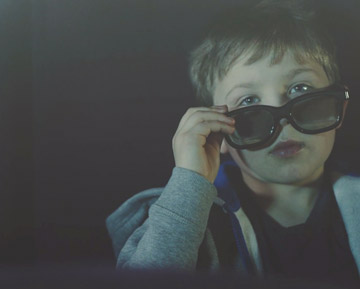Primary Times - the definitive what’s on and where to go family guide of activities and events for children of primary school age. Things to do with your kids during the school holidays including arts and craft activities, music and theatre for children, parties, competitions, days out, and family attractions along with term time drama schools, dance classes, after school clubs and sports activities. Things to do at a place near you!
May the Force be with you: Do films have the power to spark the imagination of our kids when it comes to science and engineering?, writes Professor Will Stewart
 Star Wars: The Force Awakens broke the opening night box office record and has become the highest grossing global movie of all time. This got me thinking that offering viewers a glimpse into the unknown through fascinating storylines and stunning visual effects, sci-fi films have become a cultural phenomenon over the last century. Movies have the power to make audiences question concepts of reality and propel them into thinking about what tomorrow could hold and often in a hugely emotive way. Some would argue the films offer a form of enhanced imagined reality to which they could owe their success in the modern world.
Star Wars: The Force Awakens broke the opening night box office record and has become the highest grossing global movie of all time. This got me thinking that offering viewers a glimpse into the unknown through fascinating storylines and stunning visual effects, sci-fi films have become a cultural phenomenon over the last century. Movies have the power to make audiences question concepts of reality and propel them into thinking about what tomorrow could hold and often in a hugely emotive way. Some would argue the films offer a form of enhanced imagined reality to which they could owe their success in the modern world.
Throughout my life I have always thoroughly enjoyed watching sci-fi films. They have become a welcome extension of my personal and professional interests in STEM subjects. I can remember, as a young adult, the thirst for scientific answers I was left with after watching and contemplating some of the ideas in Stanley Kubrick’s 2001 Space Odyssey, or the excitement I felt as a child when I saw Patrick Moore’s Sky at Night – my imagination went into overdrive. But, do sci-fi films still inspire our kids in the same way?
Taking into account the list of the most well-known sci-fi films, it’s easy to recognise that most of them explore ambitious topics that many people might struggle to comprehend. In some of the most popular films such as Jurassic Park, E.T., Back to the Future and Star Wars, they tackle complex subjects like genetic modification, aliens, time travel and artificial intelligence.
Although these popular films do touch upon a myriad of intelligent ideas, a lot of the time they offer little explanation into the science and engineering of how the devices shown could feasibly work. The audience is expected to accept the intellectual ingredients of the films at face value. With a captivating combination of both science and engineering driving the plot and creating the scenes, I imagine some people can be left bewildered by the concepts.
It’s with my own personal experience in mind that I do firmly believe that films, and particularly sci-fi films, have the power to spark the creativity inside people when it comes to science and engineering but what is just as important is a parent recognising this and doing something about it. We play a huge part in supporting and encouraging young people – inspiration is only half of it. It really is quite possible to be visionary and exciting but still keep the STEM essentially accurate!
Thinking about the power of film to influence youngsters when it comes to STEM, myself and the Institution of Engineering and Technology (IET) as part most recent Engineer a Better World activity, put it to the test and asked some of the UK’s children their burning sci-fi film questions which have left them perplexed. In fact, some of the questions asked reminded me of the types of things I wanted to know the answer to as a child and this fills me with hope that there is potentially a whole generation of budding engineers out there.
By listening and responding to children, I’m delighted to be part of nurturing their natural STEM curiosity, in this case sparked by popular films. I feel that topical activities like this will help to change perceptions of what modern engineering is and what it can offer young people as a career.
Here are the top questions with my answers:
Would it be possible to make a light saber - how much would it cost? Becky Francas, aged 12
Depends on what you mean. Clearly every toy store has examples and I believe the original movie used wooden sticks wrapped in reflective tape (like road signs and night safety gear) with a lamp mounted near the camera to make them look bright.
This is clearly quite cheap and you could make your own to video with a smartphone and its built-in lamp, but it would not cut bits off people (or aliens) which is perhaps just as well.
Could you make a very powerful laser, say, in a small package that would cut things? Yes indeed – fibre lasers, including ones made at Southampton, are fairly compact and will cut thick steel plate (used for cutting and welding in the car industry), and though they are normally invisible you could certainly make a visible green one.
Of course the reflected backscatter from any piece of bright armour you happened to touch might blind you (we are talking about lasers a million times brighter than a laser pointer) so maybe it is not such a great weapon – and yes, very expensive by Christmas present standards!
And it would not look or act quite like a light saber either, even if it used green light – not so limited in length for example, which might be awkward.
Are there aliens, like the one in E.T.? Ines Rognaldsen Wood, aged 12
Yes, almost certainly, we just haven't found any yet. People are looking for oxygen, presuming that this is a good marker for life (probably single-cell life, as life was on Earth for the majority of the time that living things have been around).
They have not found evidence of it yet because, although spectroscopy (looking for specific colours that are absorbed by specific gases) should be simple, it is very difficult to see a small planet in the much bigger glare from the nearby star.
The planets themselves have been seen (thousands of them now – mostly big like Jupiter but some near Earth size), but seeing them well enough to do spectroscopy is still difficult.
Good space telescopes being planned should be able to do this and I am guessing that we will see oxygen on a distant planet relatively soon.
The idea that oxygen is a marker for life is fairly solid – oxygen is highly reactive (think of fire for example) and does not hang around in the atmosphere very long unless something is making it continuously; the obvious candidate is life. There was no free oxygen on Earth until blue-green algae (single cell ‘plants’) started to make it.
Would it be possible to bring dinosaurs back to life like in Jurassic Park? Becky Francas, aged 12
Probably not – we do not have enough dinosaur DNA. The issue with dinosaurs is nothing specifically to do with them – it is that DNA is a big and complex molecule and, like other living things, it decays fairly quickly after death.
All we have for dinosaurs is fossils – basically imprints in soil that have been ‘cast’ into shapes with other soil and then made into rocks for preservation, not actual bits of dinosaur. The movies did recognise this and suggested blood from mosquitos in amber, but even this would contain very little, if any, DNA – and that would mostly be insect.
A frozen mammoth is a very different proposition, though – basically it is still mammoth. It will also have largely decayed (ever wanted to eat something a few millennia past its sell-by date?) but since it would only be a few thousand years old, the chances are much better.
Could a car actually run on uranium like in Back to the Future? Josh Wood, aged 13
Yes and it would last a long time (radioactive fuel was, and indeed still is being, used by the Voyager spacecraft). However, the risks of radioactivity would be significant.
It is hard to contain radioactivity in a small vehicle because the shields need to be very thick and thus heavy – so ships and submarines but not really cars and planes.
Some kinds of radioactivity are less harmful; the radioactive particles do not penetrate as far as uranium's, and these can be used in some cases. For example, Tritium (radioactive Hydrogen) has been used for safety exit sign lighting in planes and lasts for 20 years or so without external power, so nice and reliable (I have one on my key ring), but not really suitable for powering a car.
| Tweet |





